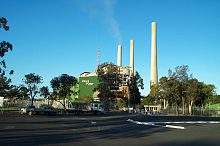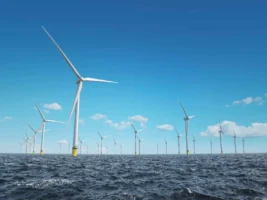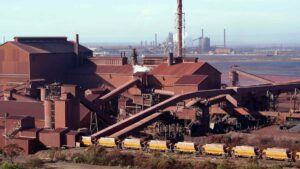The so-called “intermittency” of wind and solar has been copping the blame from much of the mainstream media for recent price spikes in the wholesale electricity market. But the variability of renewable energy sometimes pales in comparison to the sudden loss of output from coal-fired generators.
The latest market report from the Australian Energy Regulator, which oversees market operations to ensure that everything is as it should be, shows one such incident on Tuesday July 12, when 1GW of coal- and gas-fired capacity was suddenly lost, sending prices soaring to more than $300/MWh.
The AER report notes that the Callide coal-fired generator in Queensland had been having coal quality issues all afternoon, gradually withdrawing more and more capacity because the coal being mined at its doorstep was not good enough to shovel into the boilers. Over three hours it withdrew 136MW of capacity.
This is not unusual. The big brown coal generators in Victoria, Loy Yang A and Loy Yang B, had similar issues last month, as we noted here, sometimes causing up to 480MW of capacity to be lost, again sending prices sky high.
The situation at Callide was made worse when a unit at the big Vales coal plant in NSW suddenly tripped, taking 630MW of capacity out of the system at 5.42pm.

On top of that, Origin Energy withdrew 275MW of capacity from its Mortlake gas-fired generator to “avoid uneconomic restart” – meaning it was not convinced that it could get its money back if it switched the generator back on, despite a jump in demand. So it withdrew that unit from the market.
The events caused prices across the National Electricity Market to jump to $300/MWh for most of that trading interval between 6pm and 6.30pm.
The point of this is to highlight that the NEM is subject to all sorts of variations – from sudden changes in demand, to the sudden loss of so-called “reliable” “base load” generators, and the variations of wind and solar. Wind and solar changes can be anticipated, mostly. Sudden trips can not.
This is one reason why major energy users are pushing for changes in the rules to encourage more battery storage, which can respond to changes in demand and supply almost instantaneously, and which the market regulators and operators think can reduce volatility in wholesale prices. Incumbent gas generators don’t like these changes, however.
In the same week as the Vales trip, electricity prices in South Australia were particularly volatile, thanks to the high gas prices and the restraint on the interconnector into Victoria. The AER reported 16 events during the week when the 30-minute price went to three times above the average.
The three biggest events – that went over $5,000/MWh – are subject to separate reports by the AER, which may take another few weeks to complete. They will provide fascinating reading.
One of the high-priced events in South Australia, on July 13, is particularly interesting. It is one of those events that sent the 5 minute price to near $14,000MWh, causing horror in the mainstream press, with blame sheeted to wind and solar.
According to the AER investigation of events, supply was tight due to constraints on the interconnector and the price of gas was high. But Origin Energy then re-bid 44MW of capacity from its Quarantine gas plant from $482/MWh to $13,239/MWh, to “ensure economic dispatch”. i.e. that it made enough money during the next 30 minute period.
The situation was complicated by the fact that 52MW of capacity from AGL’s Torrens Island plant was suddenly not available because of a delay in returning it online, due to ramping issues (the time it takes to get old gas generators going – another reason to push for battery storage).
That appeared to make the jump in wholesale price at 9.05am that morning a fait accompli.
“When the above rebids became effective at 9.05am the dispatch price increased from $579/MWh at 9am to $13 330/MWh,” the AER noted. Then, just as suddenly, more capacity flooded into the market and the price went negative for the remainder of the interval.
But the point is this: The National Electricity Market is a complex beast. Simply blaming wind and solar for high price spikes is ridiculous, as the energy minister Josh Frydenberg noted last week.
These price spikes used to happen every second day before the arrival of wind and solar and some fossil fuel generators have been pinged for illegal practices, and for unfairly pushing up the cost of wholesale electricity.
Little wonder that the South Australian government is pushing to open up a new connector and open its market to more competition.










